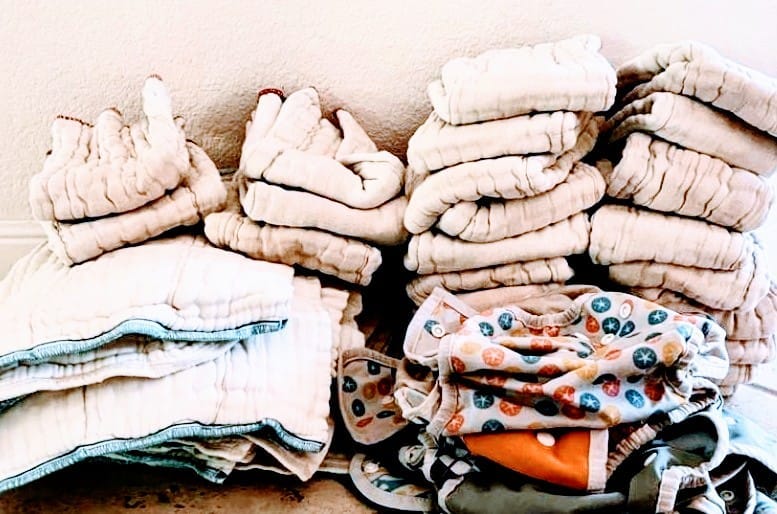I am a mom to 9 and 6 year olds. Both my kids were cloth diapered and I am here to tell you about my experience. We all know that diapers are really bad for the environment. An average child goes to 6000-8000 diapers before being potty trained (translating to ~2500 $ for one child). Each diaper takes roughly 500 years to decompose in the landfill. If you want to reduce your environmental footprint in this regard, cloth diapers are an excellent option.
What you will need
Cloth diapers come in several kinds
AIO (all in one) diapers would be the closest to disposable diapers. An example is this one. You put the whole thing in the laundry when soiled. In my experience, this took too long to dry and wasn’t worth the convenience.
Pocket diapers – These diapers have a pocket where you can put absorbent inserts in. When you do laundry you remove the insert out of the pocket.
Prefolds – A prefold diaper is wrapped around your baby and you can optionally use a plastic reusable cover on top of the diaper.
Flats – The old fashioned diaper that people used for centuries! It is basically a piece of cloth.
We used prefolds after having tried several kinds. There are multiple ways of wrapping the prefold and this video does a great job to demonstrate how to wrap them. Traditionally you use safety pins for holding the diaper in place but I found that Snappi clips work much better than safety pins.
In addition, you will also need
A wet bag to store the dirty diapers. Something like this.
A diaper sprayer to get rid of solid poop from the diaper before you store it in the wet bag. A bidet hose works just fine. Don’t worry about being perfect here, just get rid of big chunks. Technically even disposable diaper users are supposed to flush away poop but no one does it.
An optional splatter shield.
Washing the diapers
Every 3-5 days depending on the number of diapers you have, you will have to do a diaper laundry load. Most modern washers have a “Sanitary Cycle” that uses extra hot water that will kill all the bacteria. You will also need a good quality detergent. I used Rockin Green but I have also used regular Tide powder in a pinch. Once washed, either the dryer or air-drying in the sun works. We used to do laundry in the nights and our dryer usage was off-peak at all times.
Childcare and cloth diapers
We were extremely lucky to find a daycare that was supportive of cloth diapers. We used to send a wet bag every day along with diapers for the day.
Ask the daycare while doing tours what their stance on cloth diapering is. I would say roughly half of the daycares we toured were okay with using cloth diapers, the others simply refused. I did make sure to let daycares know if I wasn’t choosing them because of their refusal to do cloth since it was a deal breaker for me. You may have to train the childcare provider if you have a specific way of putting the cloth diaper on.
Travel
For local travel by car, we carried our wet bag and cloth diapers around. For long distance travel we switched to disposable diapers for that duration.
Retrospective
When we started, we had 24 newborn size diapers. As the kids grew we ended up needing 24 more of the “medium” size diapers. Both my kids were on the slimmer side and were potty trained at approximately 2.5 years old and we didn’t need any larger size than the medium. I reused the same 48 diapers for my second child.
If I were to have another child I would do cloth diapers again in a heartbeat. At the same time I understand that it takes some amount of privilege to make cloth diapers work. One needs to have a good quality washing machine inside their home. So many people live in apartments with shared laundry and it would certainly be a pain in that situation. There are also services that do the diaper laundry for you and are a great choice if you happen to live in an area that has this option if you do not want to do diaper laundry.
While we can all make better individual choices, here change at scale will be possible only via government policies. At the moment, the city I live in does not even accept compostable diapers in the compost collection. So even people who can afford to buy compostable diapers have to toss them into the landfill unless they sign up for a private composting option.



